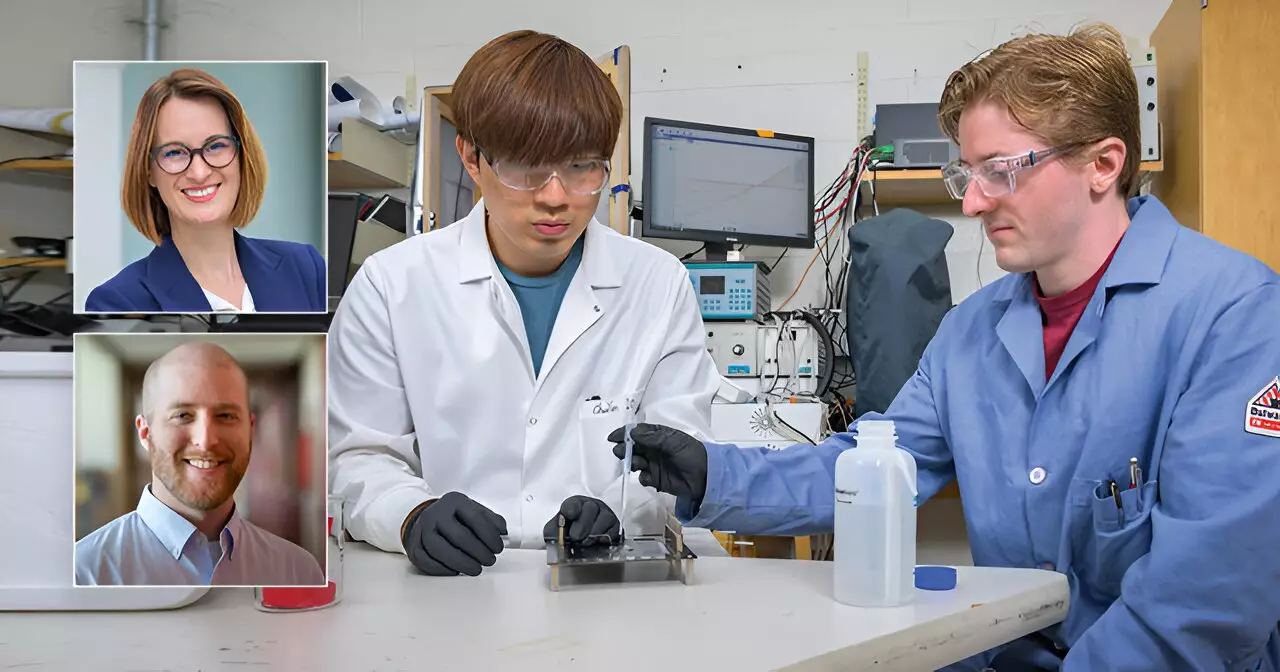As the world grapples with the relentless burden of plastic waste, a pioneering research effort has emerged from the collaboration between the University of Delaware and Argonne National Laboratory. This initiative draws upon innovative chemistry to convert Styrofoam—a ubiquitous component of our waste stream—into a high-value conducting polymer known as PEDOT:PSS. Published in JACS Au, this research reveals not only the scientific feasibility of upcycling plastic waste but also its potential applications in cutting-edge electronics, such as silicon-based hybrid solar cells and organic electrochemical transistors.
This research project, led by assistant professor Laure Kayser, highlights a critical juncture in addressing global sustainability. The capacity to synthesize high-performance materials from discarded plastics signals a promising shift towards a more circular economy. The implications of this approach extend beyond mere theoretical interest; they propose practical solutions for integrating waste into the production of commercially viable materials.
Innovating Through Sulfonation: The Chemical Process Explored
At the heart of this transformative process is sulfonation—a chemical reaction where a hydrogen atom is replaced by a sulfonic acid group. This method, traditionally used in the creation of dyes and pharmaceuticals, now serves a pivotal role in developing functional polymers from polystyrene, particularly when sourced from Styrofoam waste. Kayser’s research team sought to refine this reaction, balancing efficiency with the integrity of the polymer chain to avoid undesirable side effects that often plague chemical syntheses.
The inquiry took a detailed turn as the team, comprised of expert chemists and materials scientists, executed numerous trials to fine-tune the sulfonation process. Their efforts revealed the complexity of modifying polymers, where even minor errors in the chemical structure can adversely alter their properties. The researchers meticulously evaluated various conditions, including solvent choices and temperature gradients, striving to achieve high degrees of functionalization while ensuring minimal defects in the polymer chain.
From Waste to Wonders: Successful Polymer Characterization and Applications
Upon successfully synthesizing PEDOT:PSS from Styrofoam, the researchers conducted rigorous comparisons between their waste-derived product and commercially available alternatives. Initial results were promising; the performance of the newly synthesized polymer was not only comparable but also demonstrated a certain eco-friendliness that traditional methods lack. Their exploratory work included the development of both organic electronic transistors and solar cells, seamlessly integrating concepts from materials science into practical applications.
Further analyses using advanced spectroscopy techniques provided deeper insights into the polymer’s characteristics, helping the researchers confirm the feasibility of their approach. Particularly noteworthy was their ability to maintain a stoichiometric balance in the sulfonation reaction, a significant advancement over traditional methods that typically require an excess of harsh chemicals. This breakthrough not only mitigates environmental concerns associated with waste production during the chemical process but also opens avenues for fine-tuning the conductivity properties of the resulting polymers.
Implications for Sustainability and the Future of Material Science
The successful upcycling of polystyrene into high-value materials heralds a new era in material science. By demonstrating that electronic materials can be derived from waste that would otherwise contribute to environmental degradation, the research supports a vision where sustainable practices permeate the electronics industry. This achievement holds extensive implications for the field, resonating particularly with scientists and engineers focused on developing greener technologies and innovative solutions for the future.
As these researchers continue to explore the fine-tuning capabilities of their synthesized polymers, they aim to broaden the applications of their work into areas including fuel cells and water filtration systems. Given that the degree of sulfonation significantly influences a polymer’s properties, the team plans to investigate how adjustments in chemical ratios can enhance material effectiveness in diverse applications.
Ultimately, the ramifications of this work stretch far into the realms of environmental impact and industrial practices. The ability to produce functional electronic materials from “trash” signifies a radical shift in how we perceive waste, transforming challenges into opportunities for innovation and growth. The exciting prospect of creating value from discarded materials paves the way for ongoing commitment to sustainability, presenting a hopeful narrative for future scientific endeavors.
Through their groundbreaking efforts, researchers like Kayser and her team not only exemplify the critical intersection of chemistry, engineering, and environmental stewardship but also inspire a collective movement toward embracing resourcefulness as we move towards a more sustainable future.

